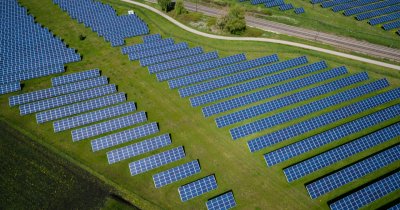At the same time, the Commission proposed to reduce the use and risk of chemical pesticides by 50% by 2030. These are the flagship legislative proposals to follow the Biodiversity and Farm to Fork Strategies, and will help ensure the resilience and security of food supply in the EU and across the world.
It is the first time that the European Commission adopted a legislation meant to repair the 80% of European habitats that are in poor condition, and to bring back nature to all ecosystems, from forest and agricultural land to marine, freshwater and urban ecosystems.
Under this proposal for a Nature Restoration Law, legally binding targets for nature restoration in different ecosystems will apply to every Member State, complementing existing laws. The aim is to cover at least 20% of the EU's land and sea areas by 2030 with nature restoration measures, and eventually extend these to all ecosystems in need of restoration by 2050.
Investment into nature restoration adds €8 to €38 in economic value for every €1 spent, thanks to the ecosystem services that support food security, ecosystem and climate resilience and mitigation, and human health.
It also increases nature in our landscapes and daily lives, with demonstrable benefits for health and wellbeing as well as cultural and recreational value.
The new law builds on existing legislation, but covers all ecosystems rather than being limited to the Habitats Directive and Natura 2000 protected areas, aiming to put all natural and semi-natural ecosystems on the path to recovery by 2030. It will benefit from substantial EU funding: under the current Multiannual Financial Framework, around €100 billion will be available for biodiversity spending, including restoration.
The targets proposed include:
- Reversing the decline of pollinator populations by 2030 and increasing their populations from there on,
- No net loss of green urban spaces by 2030, a 5% increase by 2050, a minimum of 10% tree canopy cover in every European city, town, and suburb, and net gain of green space that is integrated to buildings and infrastructure,
- In agricultural ecosystems, overall increase of biodiversity, and a positive trend for grassland butterflies, farmland birds, organic carbon in cropland mineral soils and high-diversity landscape features on agricultural land.
- Restoration and rewetting of drained peatlands under agricultural use and in peat extraction sites,
- In forest ecosystems, overall increase of biodiversity and a positive trend for forest connectivity, deadwood, share of uneven-aged forests, forest birds and stock of organic carbon,
- Restoring marine habitats such as seagrasses or sediment bottoms, and restoring the habitats of iconic marine species such as dolphins and porpoises, sharks and seabirds,
- Removing river barriers so that at least 25 000 km of rivers would be turned into free-flowing rivers by 2030.
Strong rules to reduce the use of chemical pesticides
The European Commission also made a proposal meant to reduce the use of chemical pesticides, which translates the commitment to halt biodiversity loss in Europe into action.
Chemical pesticides harm human health and cause biodiversity decline in agricultural areas. They contaminate the air, the water and the wider environment.
The Commission is therefore proposing clear and binding rules:
- Legally binding targets at EU and national level to reduce by 50% the use and the risk of chemical pesticides and the use of the more hazardous pesticides by 2030. Member States will set their own national reduction targets within defined parameters to ensure that the EU wide targets are achieved. Strict new rules on environmentally friendly pest control.
- A ban on all pesticides in sensitive areas. The use of all pesticides will be prohibited in places such as urban green areas, including public parks or gardens, playgrounds, schools, recreation or sports grounds, public paths and protected areas in accordance with Natura 2000 and any ecologically sensitive area to be preserved for threatened pollinators. This new rules will remove chemical pesticides from our proximity in our everyday lives.
 Oana Coșman
Oana Coșman












Any thoughts?